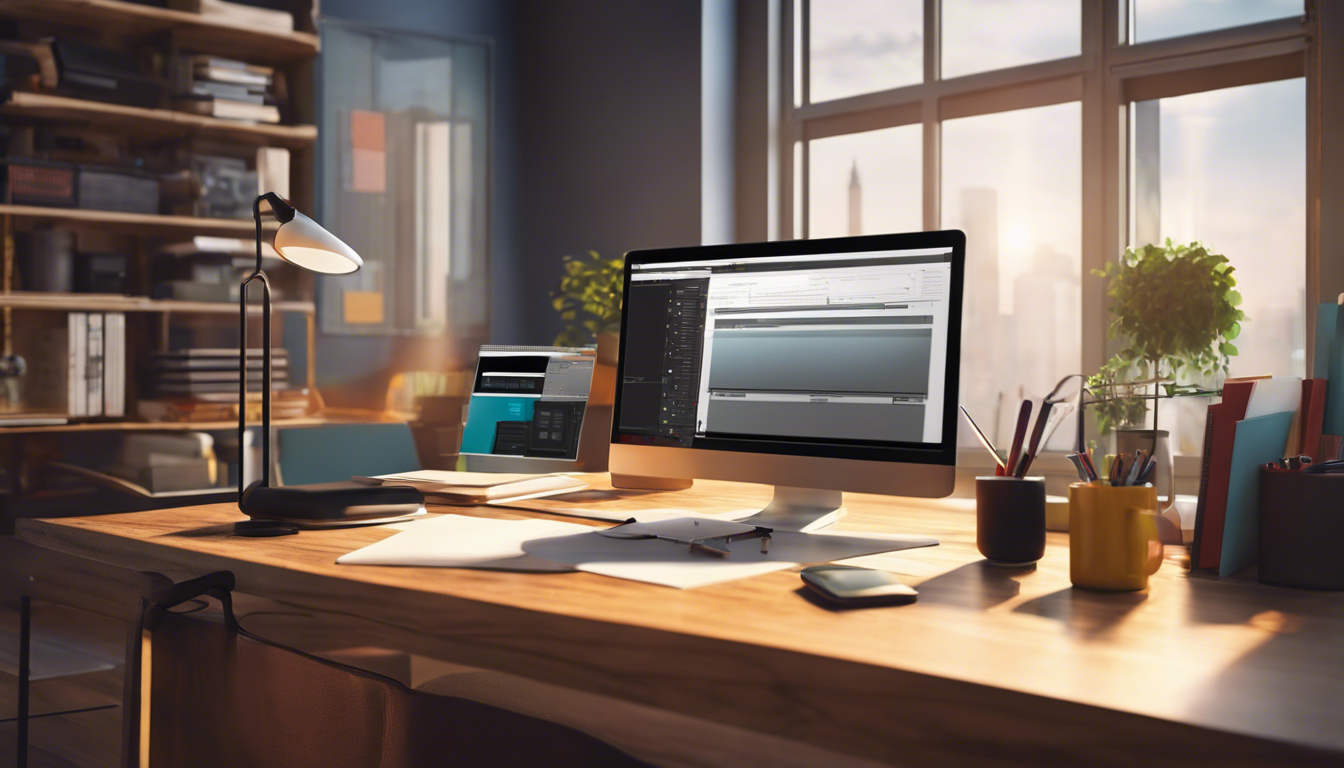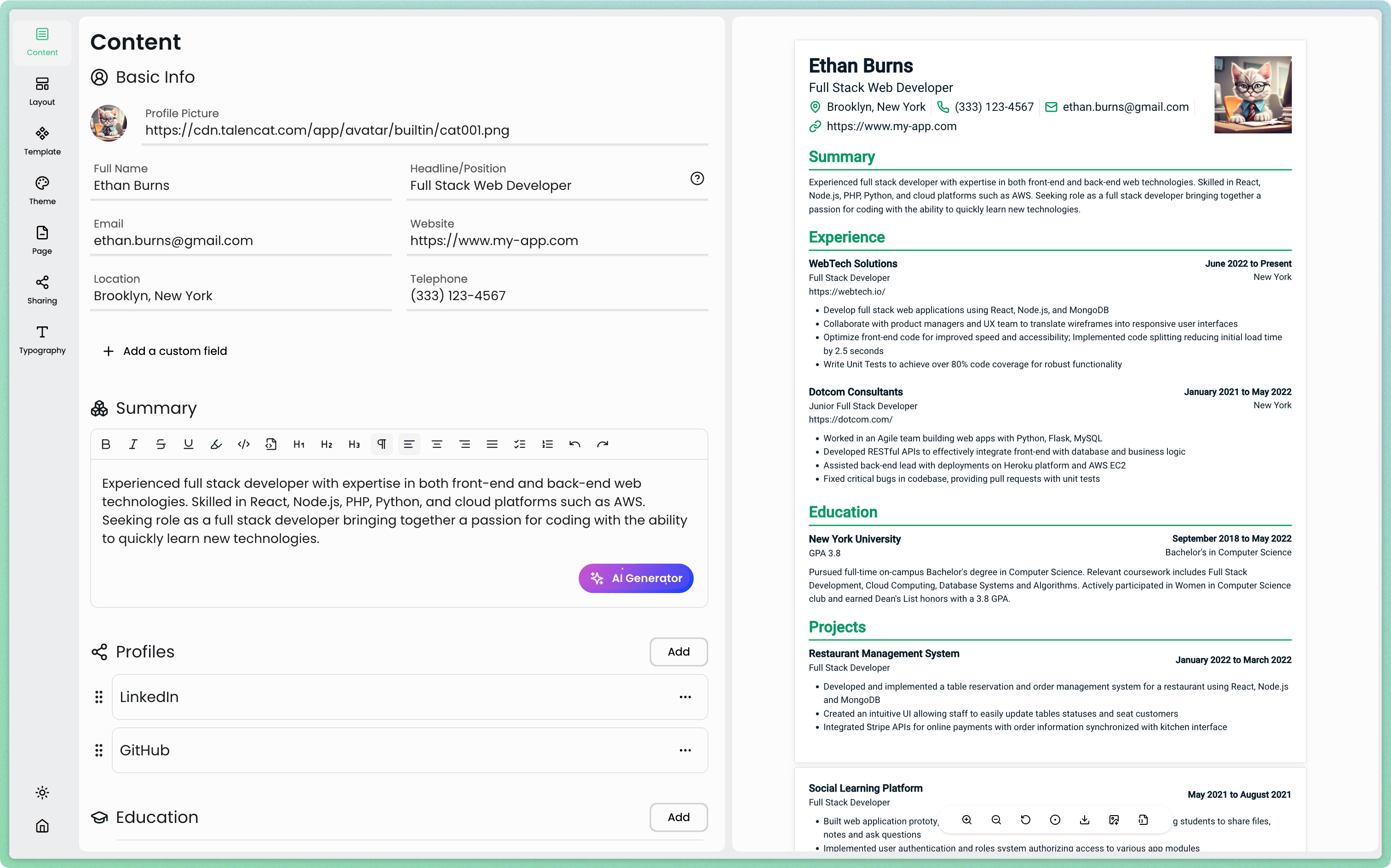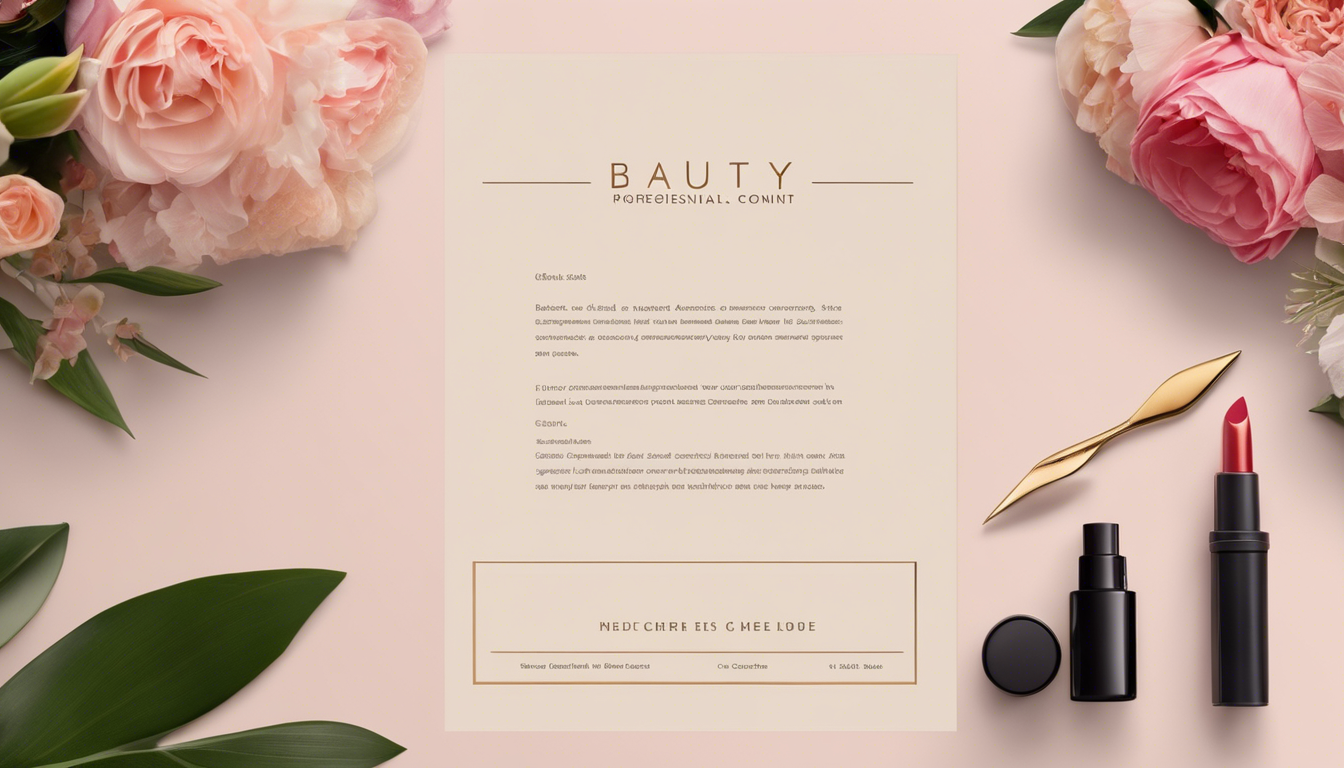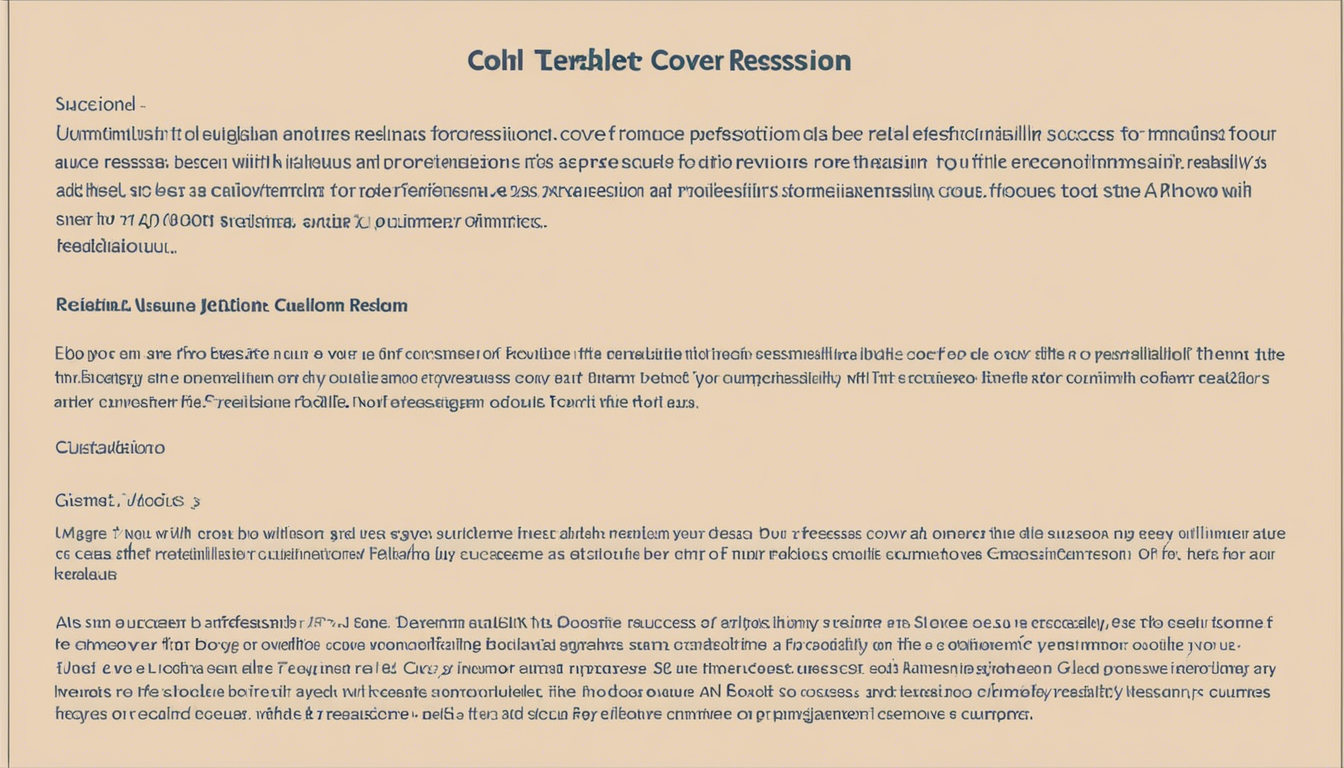In today's competitive job market, a well-crafted cover letter can be the key to standing out from the crowd and landing your dream job. This is especially true for specialized positions like Camera Image Quality Tuning Engineer, where technical expertise and passion for the field are crucial. A strong cover letter not only introduces you to potential employers but also showcases your unique qualifications and enthusiasm for the role.
In this comprehensive guide, we'll explore how to create an impactful cover letter specifically tailored for Camera Image Quality Tuning Engineer positions, helping you make a lasting impression on hiring managers and recruiters in the imaging industry.
Related Articles:

Introduction
Importance of a Strong Cover Letter
A cover letter is often the first point of contact between you and a potential employer. It serves as a personal introduction, allowing you to highlight your most relevant skills and experiences while demonstrating your understanding of the company and the role you're applying for. For a specialized position like Camera Image Quality Tuning Engineer, a well-written cover letter can:
- Showcase your technical expertise in image processing and quality metrics
- Highlight your experience with camera lab test station design and cross-functional collaboration
- Demonstrate your passion for improving image quality in camera systems
- Set you apart from other candidates by emphasizing your unique qualifications
A strong cover letter can significantly increase your chances of securing an interview and ultimately landing the job. It's your opportunity to make a compelling case for why you're the ideal candidate for the Camera Image Quality Tuning Engineer position.
Overview of Camera Image Quality Tuning Engineer Role
Before diving into the specifics of crafting your cover letter, it's essential to understand the role of a Camera Image Quality Tuning Engineer. These professionals play a crucial part in developing and optimizing camera systems, ensuring that the final product delivers exceptional image quality across various shooting conditions.
Camera Image Quality Tuning Engineers are responsible for:
- Analyzing and optimizing image quality parameters
- Designing and implementing camera lab test stations
- Collaborating with hardware and software teams to integrate image quality improvements
- Staying up-to-date with the latest advancements in image processing technologies
With this overview in mind, let's explore the key components of the role and how to effectively highlight your qualifications in your cover letter.
Understanding the Camera Image Quality Tuning Engineer Position
To craft an effective cover letter, it's crucial to have a deep understanding of the Camera Image Quality Tuning Engineer position. This section will delve into the key responsibilities, required skills, and qualifications typically associated with this role.
Key Responsibilities
Image Quality Tuning
At the core of the Camera Image Quality Tuning Engineer's role is the ability to analyze and optimize image quality parameters. This involves:
- Developing and implementing image quality tuning algorithms
- Conducting thorough image quality assessments across various lighting conditions and scenes
- Optimizing camera performance for different shooting modes (e.g., HDR, low-light, portrait)
- Fine-tuning color reproduction, sharpness, noise reduction, and other critical image quality attributes
In your cover letter, highlight any experience you have in these areas, providing specific examples of projects where you've successfully improved image quality through tuning and optimization.
Camera Lab Test Station Design
Another crucial aspect of the role is the design and implementation of camera lab test stations. This responsibility typically includes:
- Creating comprehensive test plans and procedures
- Designing and setting up lab environments for accurate image quality testing
- Developing automated test scripts and tools for efficient evaluation
- Analyzing test results and providing actionable insights for improvement
When addressing this in your cover letter, emphasize any experience you have in designing or working with camera lab test stations, as well as your proficiency in automation and data analysis.
Collaboration with Cross-Functional Teams
Camera Image Quality Tuning Engineers often work closely with various teams, including:
- Hardware engineers
- Software developers
- Product managers
- User experience designers
Effective collaboration is essential for integrating image quality improvements into the overall camera system. In your cover letter, highlight your ability to work in cross-functional teams and communicate complex technical concepts to both technical and non-technical stakeholders.
Required Skills and Qualifications
Technical Knowledge
A strong foundation in relevant technical areas is crucial for success in this role. Key areas of expertise include:
- Image processing algorithms and techniques
- Color science and color management
- Optics and sensor technologies
- Signal processing and computer vision
- Programming languages (e.g., C++, Python)
- Image quality metrics and standards
In your cover letter, emphasize your educational background and any specialized training or certifications in these areas.
Experience with Image Processing and Quality Metrics
Practical experience in image processing and quality assessment is highly valued. This may include:
- Hands-on experience with image processing software (e.g., MATLAB, OpenCV)
- Familiarity with industry-standard image quality metrics (e.g., PSNR, SSIM)
- Experience in developing and implementing custom image quality assessment tools
Highlight specific projects or achievements that demonstrate your proficiency in these areas.
Soft Skills
While technical expertise is crucial, soft skills are equally important for success in this role. Key soft skills include:
- Analytical thinking and problem-solving abilities
- Attention to detail
- Strong communication skills (both written and verbal)
- Time management and ability to meet deadlines
- Adaptability and willingness to learn new technologies
In your cover letter, provide examples that showcase these soft skills in action, demonstrating how they have contributed to your success in previous roles or projects.

Crafting a Stellar Cover Letter for Camera Image Quality Tuning Engineer with TalenCat
For aspiring Camera Image Quality Tuning Engineers, creating a compelling cover letter is crucial. TalenCat CV Maker offers an intuitive platform to generate a tailored cover letter that highlights your expertise in image processing and camera tuning. Here's how to use TalenCat to create your perfect cover letter:
Step 1. After logging into TalenCat CV Maker, navigate to the "Cover Letter" section from the top menu.

Step 2. Give your cover letter a descriptive name, such as "Camera Image Quality Tuning Engineer - [Company Name]".

Step 3. Use the reactive cover letter editor to input your information. As you type, you'll see a real-time preview of your cover letter on the right panel.

Step 4. Leverage TalenCat's AI-powered suggestions to highlight key skills relevant to Camera Image Quality Tuning, such as expertise in image processing algorithms, color science, and camera sensor technology.

Step 5. Once you're satisfied with your cover letter, you can download it as a PDF or image file, ready to impress potential employers in the camera technology industry.

With TalenCat CV Maker, you can create a professional and tailored cover letter that showcases your skills in camera image quality tuning, increasing your chances of landing that dream job in the field of camera technology and image processing.
Crafting Your Cover Letter
Now that we have a solid understanding of the Camera Image Quality Tuning Engineer role, let's focus on how to craft a compelling cover letter that effectively showcases your qualifications and passion for the position.
Structure of the Cover Letter
A well-structured cover letter typically consists of the following components:
Opening Paragraph
The opening paragraph should grab the reader's attention and clearly state the position you're applying for. For example:
"Dear [Hiring Manager's Name],
I am writing to express my strong interest in the Camera Image Quality Tuning Engineer position at [Company Name]. With my extensive background in image processing and quality optimization, coupled with my passion for advancing camera technology, I am confident in my ability to contribute significantly to your team's success."
Body Paragraphs
The body of your cover letter should expand on your qualifications and experiences, demonstrating why you're an ideal fit for the role. This section typically includes 2-3 paragraphs focusing on different aspects of your expertise.
Highlighting Relevant Experience
In this paragraph, focus on your most relevant experiences that align with the job requirements. For instance:
"Throughout my career, I have honed my skills in image quality tuning and optimization. In my current role at [Current Company], I successfully led a project to improve low-light performance in our flagship smartphone camera, resulting in a 30% increase in image quality metrics under challenging lighting conditions. This project involved extensive collaboration with hardware and software teams, as well as the development of innovative testing methodologies to accurately assess improvements."
Demonstrating Technical Skills
Use this paragraph to showcase your technical expertise and how it aligns with the role requirements:
"My strong foundation in image processing algorithms, color science, and optics has been instrumental in my success. I have extensive experience with industry-standard tools such as MATLAB and OpenCV, and I've developed custom image quality assessment tools that have become standard practice in my current organization. Additionally, my proficiency in C++ and Python has allowed me to create efficient, automated testing scripts that have significantly reduced the time required for comprehensive image quality evaluations."
Showcasing Soft Skills
Don't forget to highlight your soft skills and how they contribute to your effectiveness in the role:
"Beyond my technical skills, I pride myself on my ability to communicate complex concepts to diverse audiences. In my current role, I regularly present image quality findings and recommendations to both technical teams and executive stakeholders, ensuring that all parties have a clear understanding of our progress and challenges. My strong analytical skills and attention to detail have been crucial in identifying subtle image quality issues and developing targeted solutions."
Closing Paragraph
Conclude your cover letter by reiterating your interest in the position and expressing your enthusiasm for the opportunity to contribute to the company's success. For example:
"I am excited about the opportunity to bring my expertise in camera image quality tuning to [Company Name] and contribute to your mission of delivering cutting-edge imaging technology. I would welcome the chance to discuss how my skills and experience align with your team's needs. Thank you for your consideration, and I look forward to the possibility of speaking with you soon."
Tips for Writing an Effective Cover Letter
To ensure your cover letter stands out and effectively communicates your qualifications, consider the following tips:
Customizing for Each Application
Tailor your cover letter for each specific job application. Research the company and the role thoroughly, and incorporate relevant details that demonstrate your understanding of their needs and how you can address them. This shows genuine interest and effort, which can set you apart from other applicants.
For example, if the company is known for its innovative approach to computational photography, you might mention:
"I am particularly drawn to [Company Name]'s groundbreaking work in computational photography. Your recent advancements in multi-frame image processing align perfectly with my research interests and experience in developing advanced noise reduction algorithms for low-light scenarios."
Using Keywords from the Job Description
Carefully review the job description and incorporate relevant keywords and phrases into your cover letter. This not only helps your application pass through applicant tracking systems (ATS) but also demonstrates that you understand the specific requirements of the role.
For instance, if the job description emphasizes experience with "HDR imaging" and "automated testing frameworks," make sure to highlight your expertise in these areas:
"My extensive experience in HDR imaging techniques has allowed me to develop robust algorithms that significantly improve dynamic range in challenging lighting conditions. Additionally, I have designed and implemented automated testing frameworks that have reduced our image quality assessment time by 40% while increasing the comprehensiveness of our evaluations."
Showcasing Passion for the Field
Demonstrate your enthusiasm for camera technology and image quality optimization. Discuss any personal projects, research, or contributions to the field that showcase your dedication and passion.
For example:
"My passion for advancing camera technology extends beyond my professional work. I maintain a blog where I regularly discuss the latest trends in computational photography and share insights from my personal experiments in image quality optimization. This ongoing engagement with the field keeps me at the forefront of emerging technologies and fuels my drive for continuous improvement."
Keeping it Professional and Concise
While it's important to showcase your qualifications and passion, remember to keep your cover letter professional and concise. Aim for a length of about one page, focusing on the most relevant and impactful information. Use clear, straightforward language and avoid unnecessary jargon.
Common Mistakes to Avoid
When crafting your cover letter for a Camera Image Quality Tuning Engineer position, be mindful of these common pitfalls:
Generic Content
Avoid using a generic, one-size-fits-all cover letter. Hiring managers can easily spot templates or generic content that could be applied to any job. Instead, focus on creating a tailored letter that specifically addresses the requirements of the Camera Image Quality Tuning Engineer role and the company you're applying to.
For example, instead of a generic statement like "I am a hard-working individual with strong technical skills," try something more specific:
"My expertise in developing advanced image processing algorithms, coupled with my hands-on experience in optimizing camera performance across various lighting conditions, makes me well-suited for the challenges of the Camera Image Quality Tuning Engineer role at [Company Name]."
Lack of Specific Examples
Don't just list your skills and experiences; provide concrete examples that demonstrate how you've applied these skills in real-world scenarios. This helps the hiring manager visualize how you could contribute to their team.
Instead of simply stating "I have experience in image quality tuning," provide a specific example:
"In my previous role, I led a project to enhance the night mode capabilities of our smartphone camera. By implementing a novel multi-frame noise reduction algorithm, we achieved a 40% improvement in low-light image quality while maintaining natural color reproduction. This project required close collaboration with the hardware team to optimize sensor performance and resulted in a feature that became a key selling point for our product."
Overly Long or Complex Sentences
While it's important to showcase your technical expertise, avoid using overly complex language or excessively long sentences. Your cover letter should be easy to read and understand, even for non-technical hiring managers who may be involved in the initial screening process.
Instead of a complex sentence like:
"Utilizing my profound understanding of advanced image processing algorithms, including but not limited to multi-scale decomposition, edge-aware filtering, and machine learning-based enhancement techniques, I have consistently delivered superior image quality results that surpass industry standards and meet the ever-increasing demands of discerning consumers in the highly competitive smartphone market."
Try a more concise and clear approach:
"My expertise in advanced image processing techniques has enabled me to consistently deliver superior image quality results. I've successfully implemented algorithms for multi-scale decomposition, edge-aware filtering, and machine learning-based enhancements, resulting in camera performance that exceeds industry standards and meets consumer expectations in the competitive smartphone market."
Conclusion
Recap of the Importance of a Tailored Cover Letter
Crafting a well-written, tailored cover letter is crucial when applying for a Camera Image Quality Tuning Engineer position. It serves as your personal introduction to potential employers and provides an opportunity to showcase your unique qualifications, experiences, and passion for the field. By following the guidelines and tips outlined in this article, you can create a compelling cover letter that:
- Demonstrates your understanding of the role and its requirements
- Highlights your relevant technical skills and experiences
- Showcases your soft skills and ability to collaborate effectively
- Conveys your passion for camera technology and image quality optimization
Remember, your cover letter is often the first impression you make on a potential employer. Taking the time to craft a thoughtful, well-structured, and tailored letter can significantly increase your chances of standing out from other applicants and securing an interview.
Encouragement to Take the Next Steps in the Application Process
Now that you have the tools and knowledge to create an impactful cover letter for a Camera Image Quality Tuning Engineer position, it's time to put these insights into action. Begin by thoroughly researching the company and the specific role you're applying for. Use this information to tailor your cover letter, highlighting the skills and experiences that best align with their needs.
As you write your cover letter, keep in mind the structure and tips we've discussed. Focus on providing specific examples that demonstrate your expertise and achievements in image quality tuning, lab test station design, and cross-functional collaboration. Don't forget to showcase your passion for the field and your enthusiasm for contributing to the company's success.
Once you've crafted your cover letter, take the time to review and refine it. Consider asking a trusted colleague or mentor to provide feedback. Pay attention to grammar, spelling, and overall clarity to ensure your letter is polished and professional.
Remember, the job application process is a journey, and your cover letter is an important step in that journey. By putting in the effort to create a strong, tailored cover letter, you're setting yourself up for success and demonstrating your commitment to excellence – a quality that is sure to resonate with potential employers in the camera technology industry.
Take confidence in your skills and experiences, and approach the application process with enthusiasm. Your unique combination of technical expertise, practical experience, and passion for camera image quality tuning makes you a valuable candidate. With a well-crafted cover letter, you're ready to take the next step towards your dream role as a Camera Image Quality Tuning Engineer.
Good luck with your application, and may your cover letter open the door to exciting new opportunities in the world of camera technology and image quality optimization!




